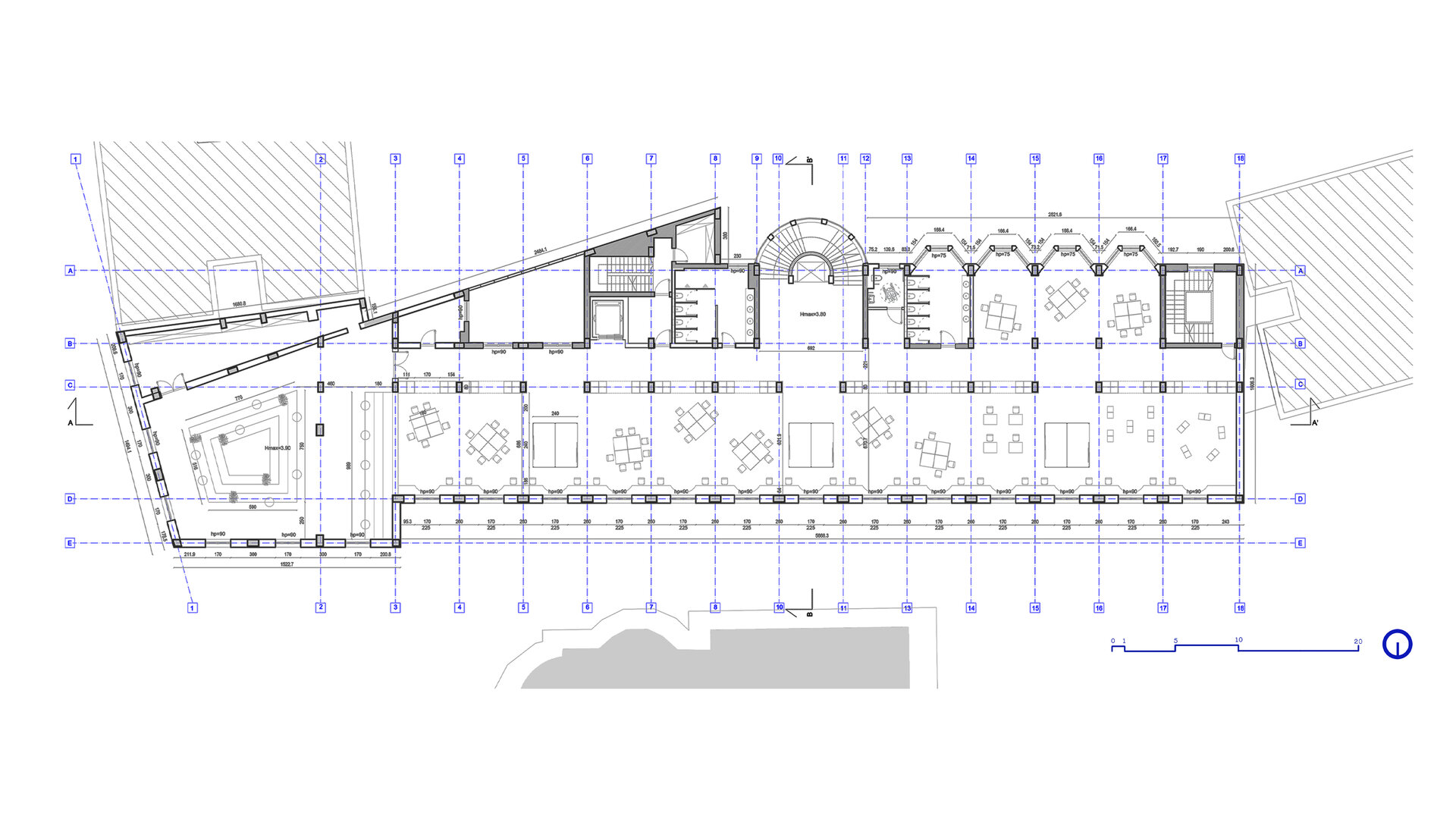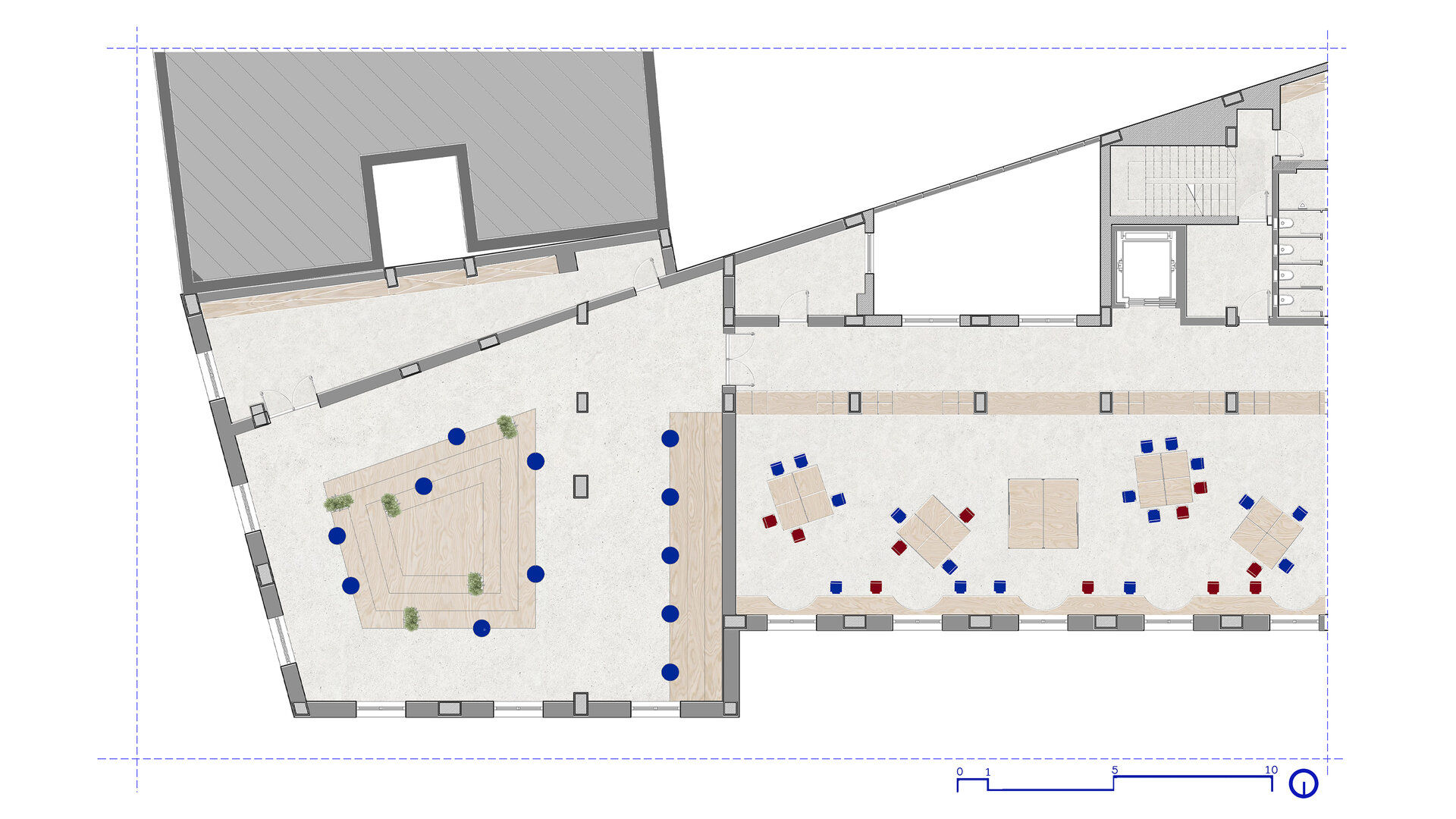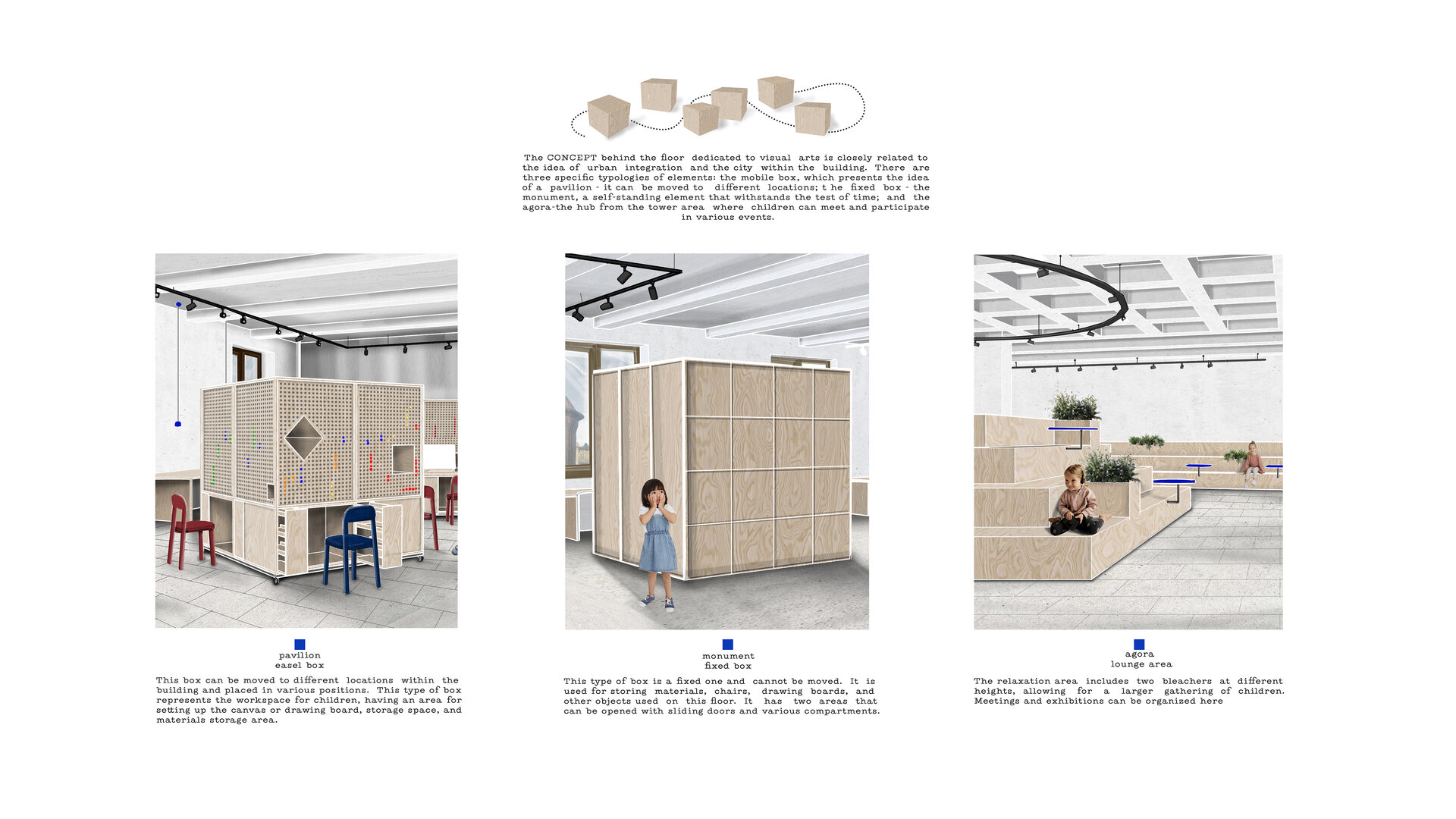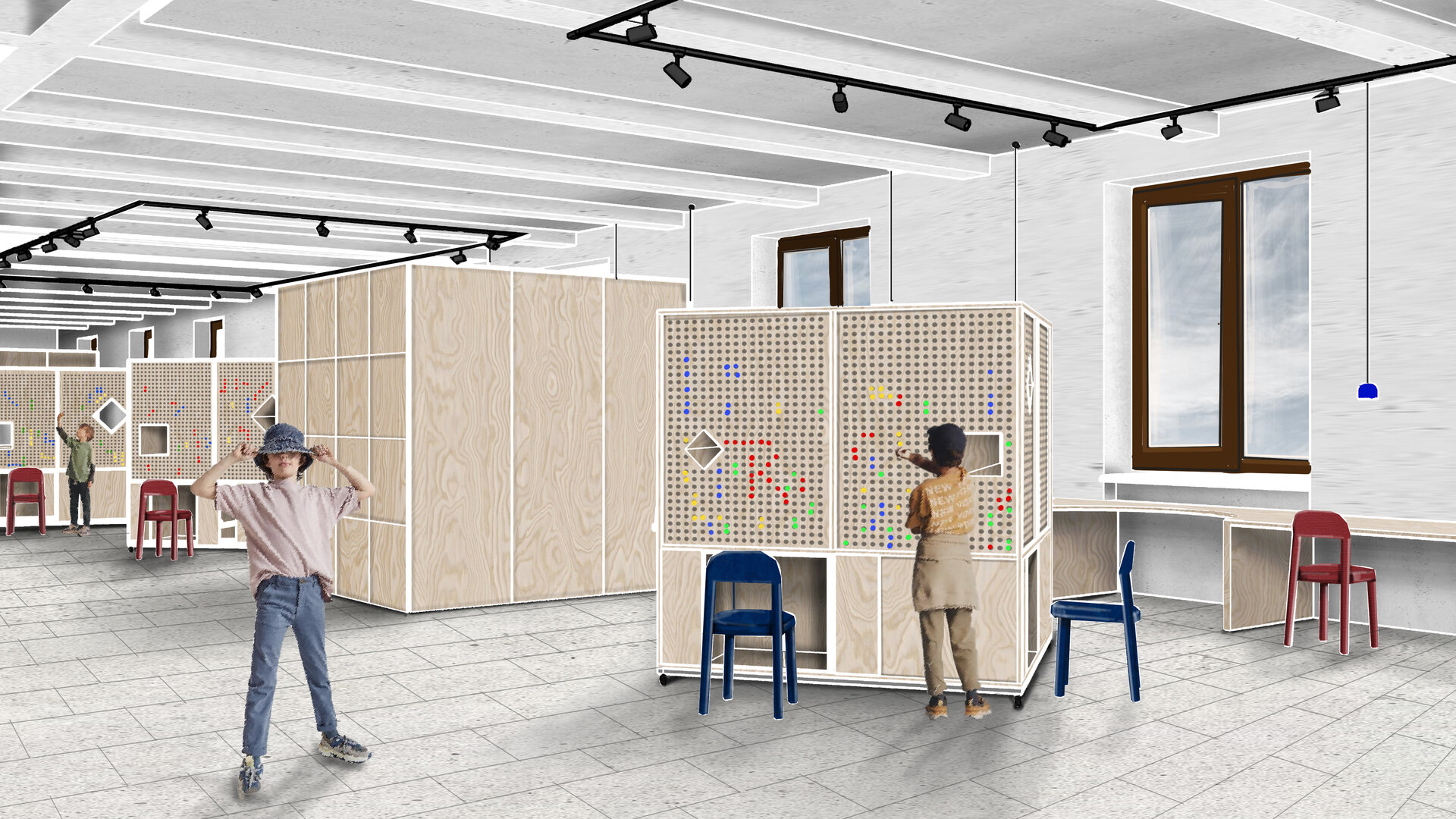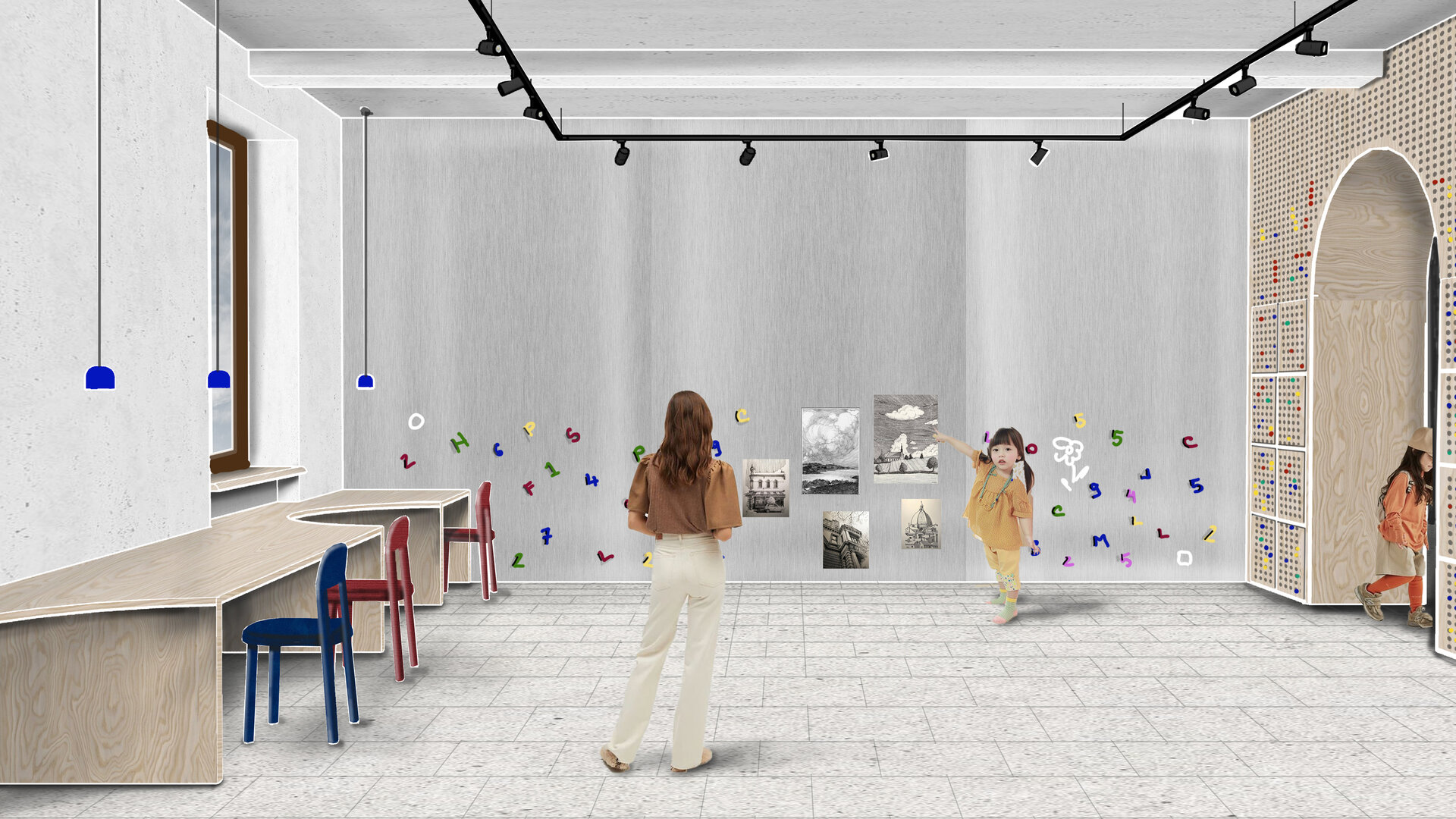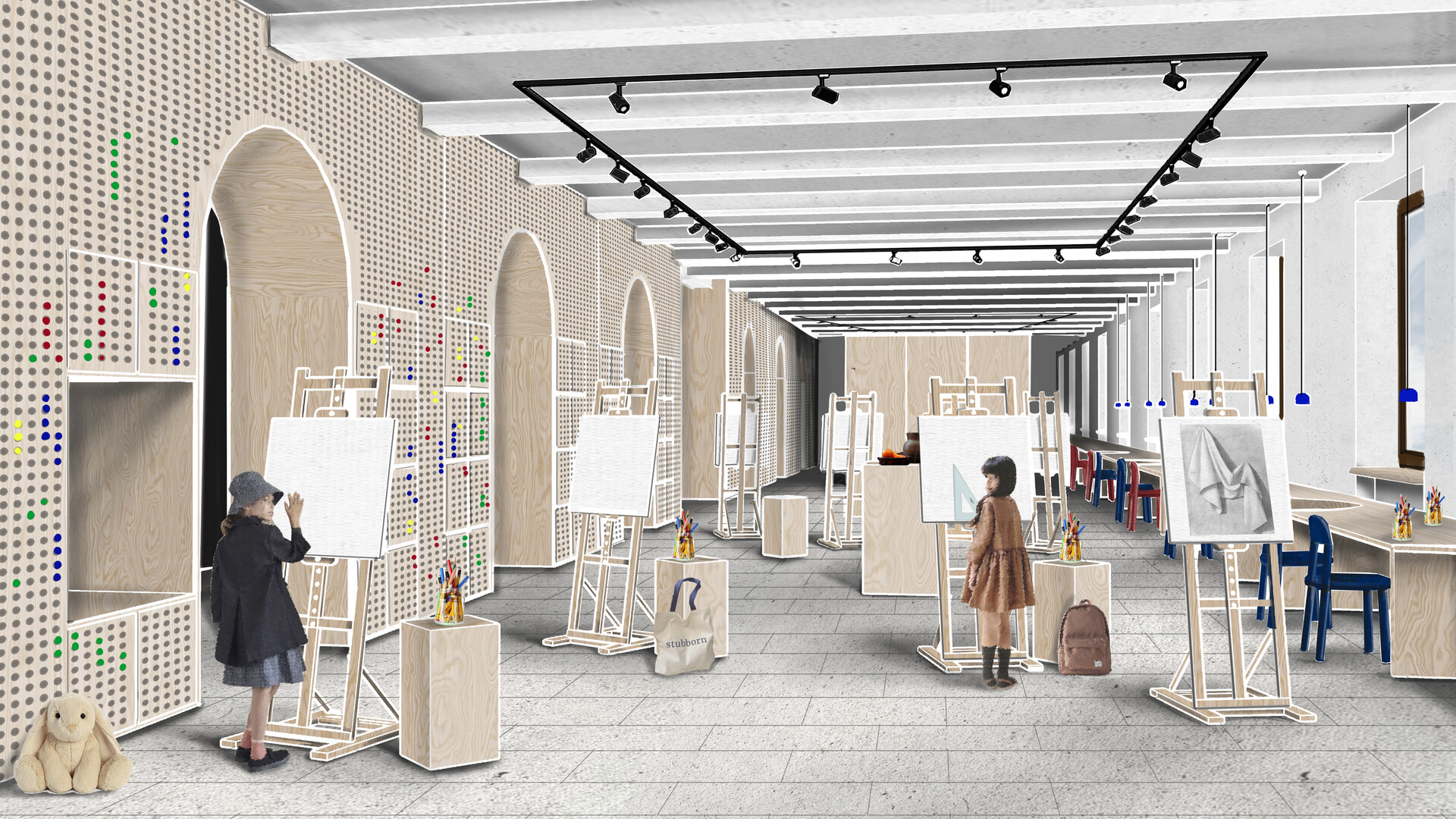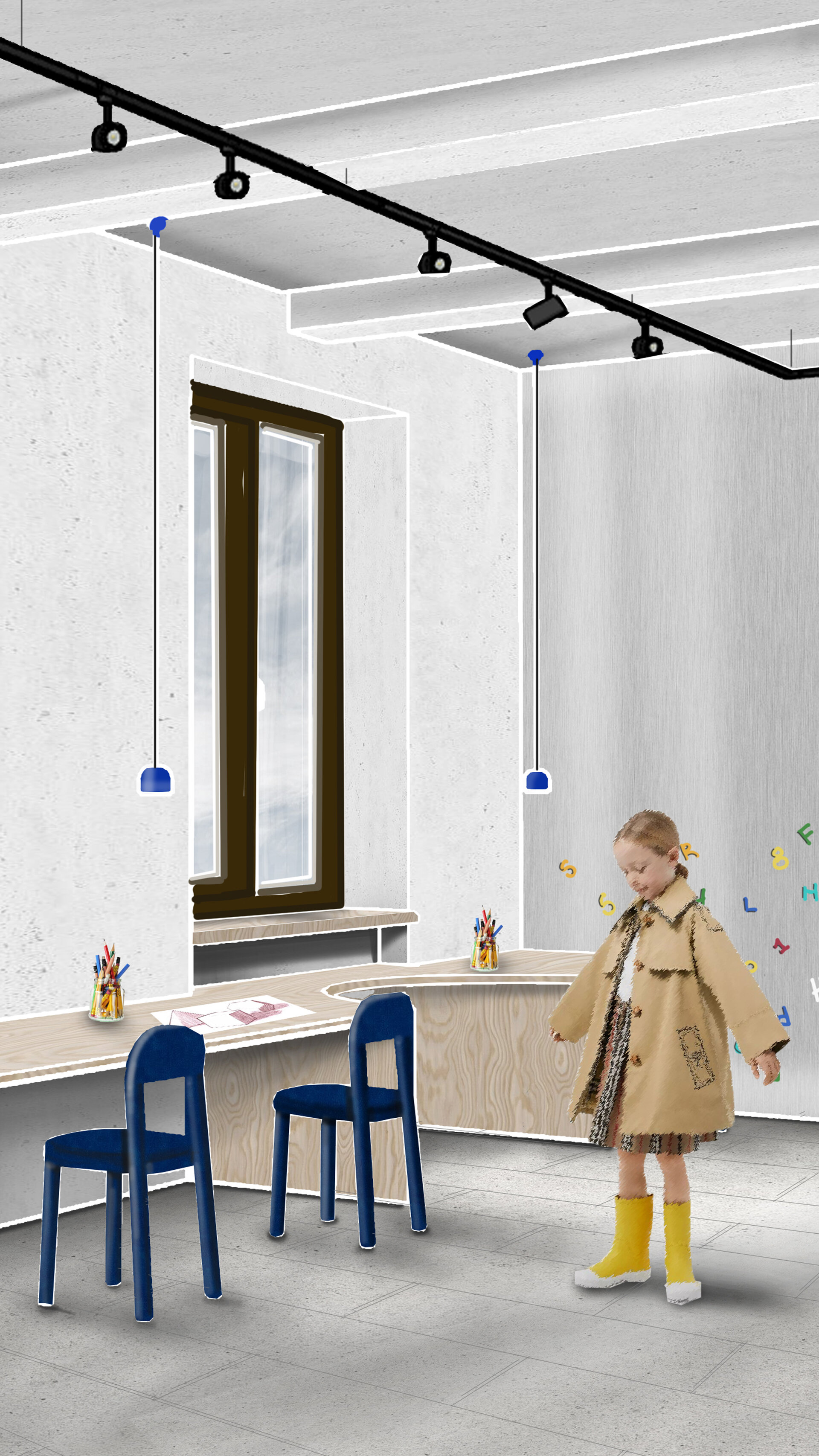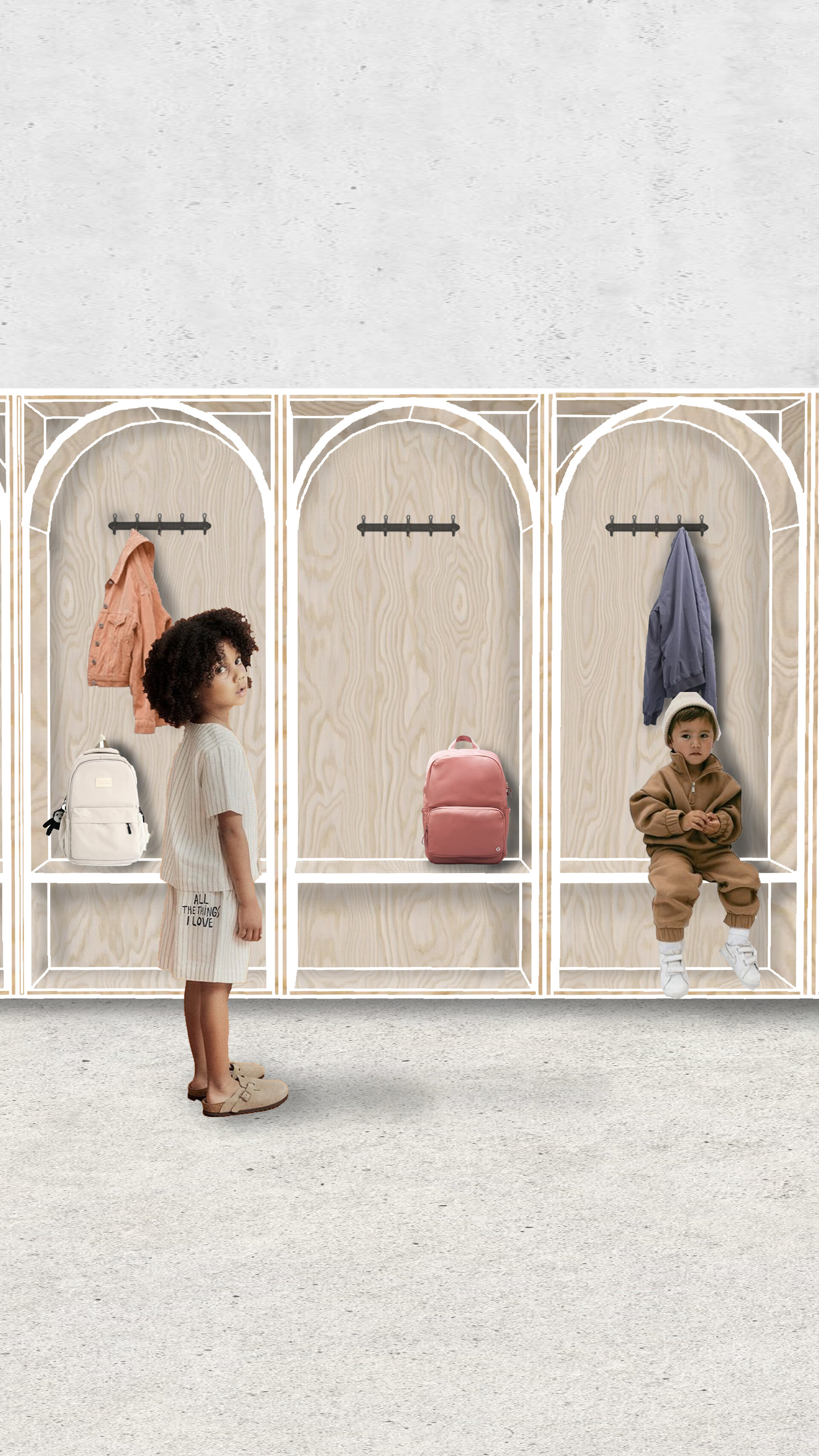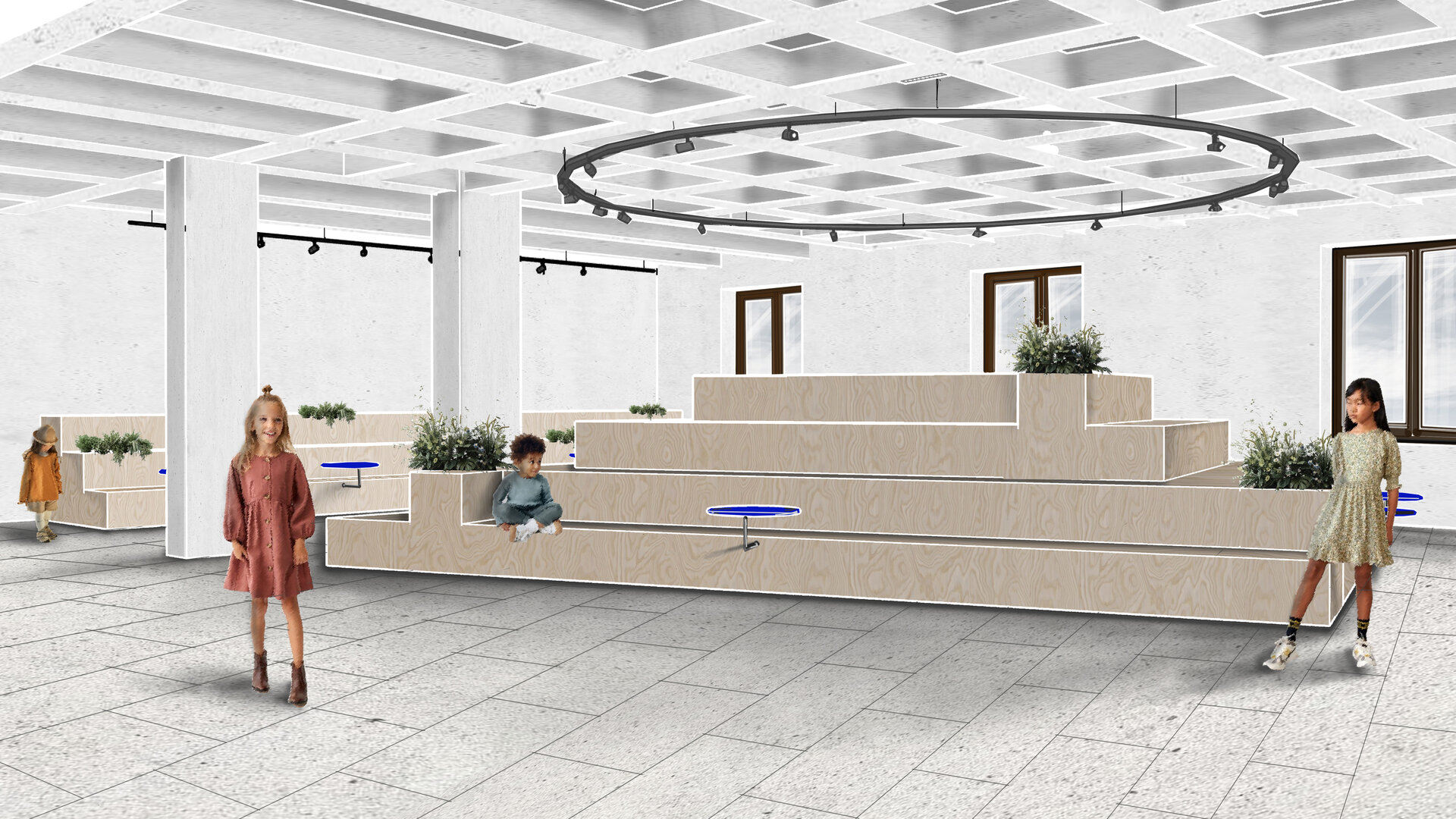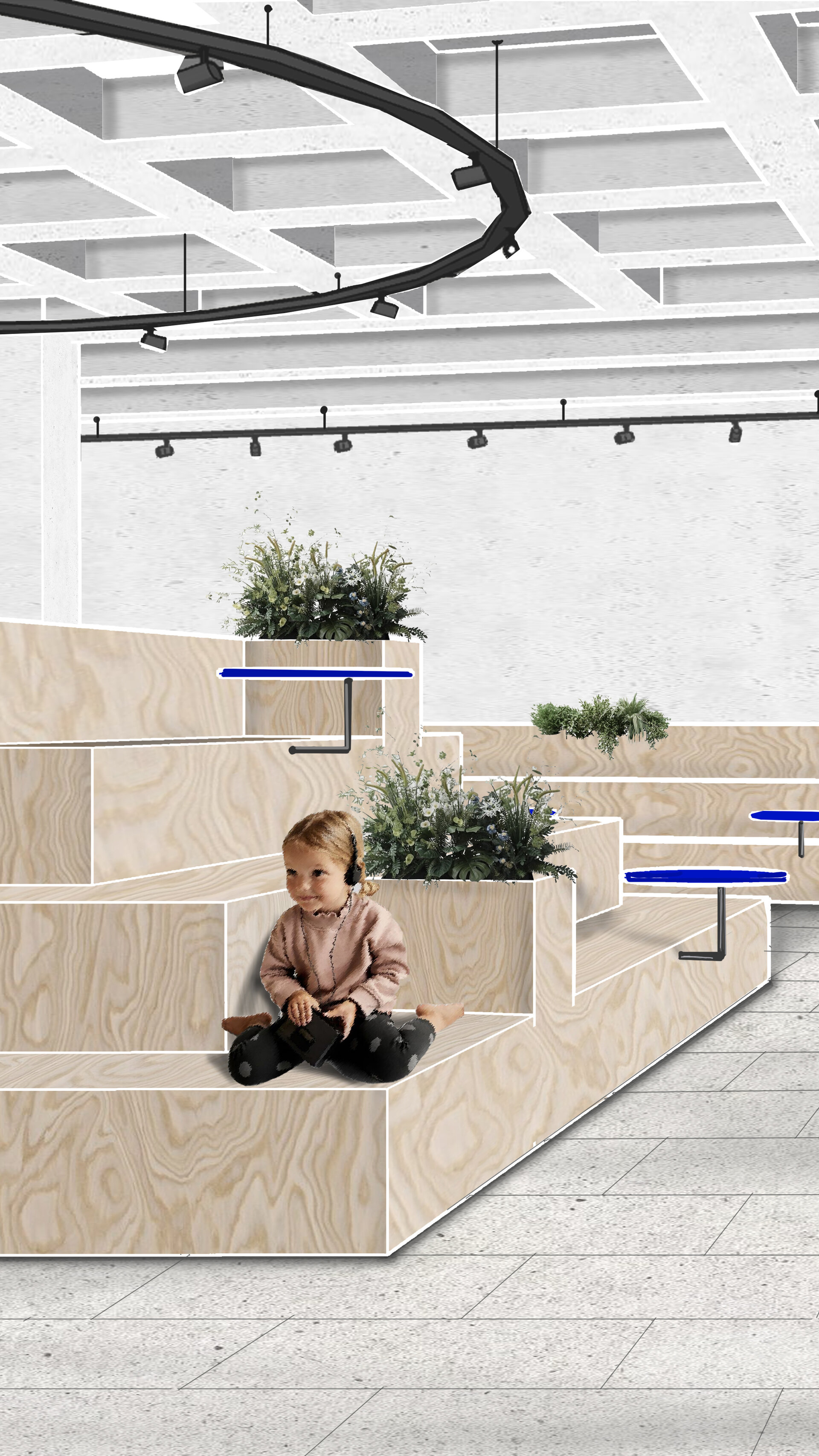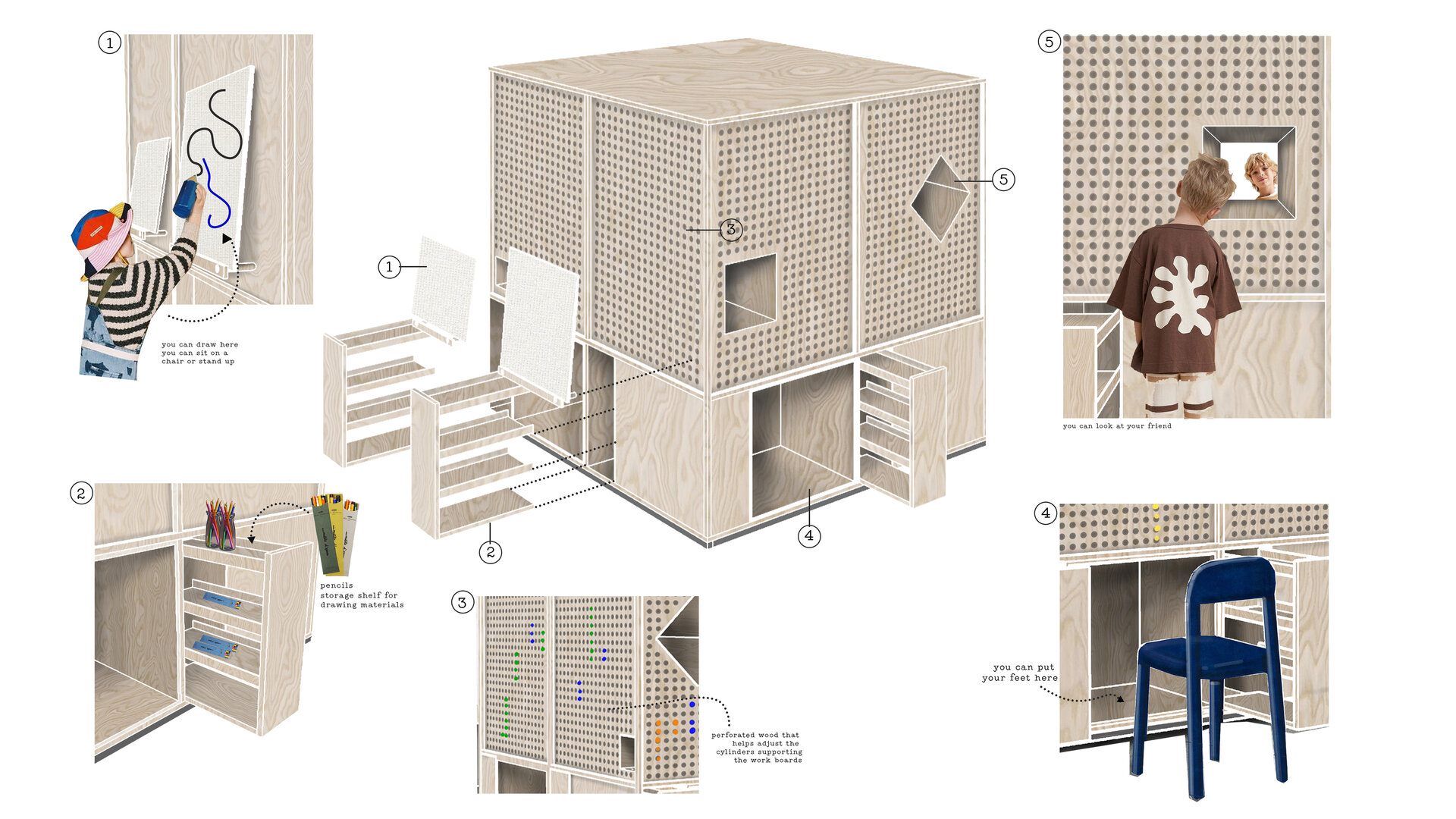
Art school for children
Authors’ Comment
WHY ART SCHOOL?
Art has been an opportunity for self-discovery and self-awareness for me. I have explored various forms of art, from dance to
theater, sculpture, painting, and finally discovered that architecture is what suits me best. This school stems from my passion for
the arts and because they have helped me develop and see the world differently. An important role is also played by the art
school I attended, where I discovered a beautiful environment in which to grow.
WHY ART SCHOOL FOR CHILDREN?
My passion for working with children began at a young age when I myself was a child, volunteering in camps where I taught painting classes. Later on, I turned it into a job, being employed at a children's club where I teach architecture courses. I enjoy passing on everything I've learned and making a mark on young talents, watching them grow before my eyes.
The project theme aims to integrate various types of arts such as music, dance, theater, and visual arts (painting, sculpture, architecture, modeling, iconography, product design, modeling) within the Kretzulescu building.
The building, structured on basement, ground floor, mezzanine, and four upper floors, is divided in such a way that users have all the necessities to carry out the proposed activities.
The theme proposes the establishment of an art school for children aged between 5 and 18, emphasizing both their development and guidance in the field of arts. Here, they can cultivate their talent and experience entirely new things, as it is a place where creativity, art, and play come together. The school operates on a regular basis, with students invited to participate in classes and enjoy specially designed relaxation areas.
The novelty brought to this space is found both in the teaching methods and in the interior design. Classes are conducted in a relaxing manner, through play and easier understanding of concepts. Children can actively participate in lessons and have access to numerous materials to help them understand the field they wish to pursue. At the interior level, the concept leaves its mark, namely "Art in Play," allowing children to use the space as they wish, as it is modular and simple.
The building features an art gallery where students' works will be exhibited, as well as concerts and performances. Additionally, there is a craft café on the ground floor where the public can experience what is happening inside the school, making it a good place for parents while they wait for their children.
The basement serves as storage space for course materials, as well as a place where children can leave their belongings to feel free throughout the day.
Floors 1, 2, and 3 host workshops divided according to the needs of the children.
The 1st floor houses music and theater workshops, as well as a modular event hall where theater performances for parents and live concerts can be held.
The 2nd floor is dedicated to dance workshops but can become completely free when children have dance competitions and performances.
The 3rd floor is designed as a "city" with a series of fixed or mobile boxes that become monuments or pavilions, making the space truly unique. Here, painting, sculpture, architecture, modeling, iconography, product design, and modeling courses are conducted.
The innovation brought by this site is the arrangement on the 4th floor, which becomes a garden because the school needs a courtyard, and the outdoor space around the building is not as safe for supervision.
The name of the concept is Art in Play. The concept is based on a series of principles that combine the idea of art with play, thereby creating an integrated educational and creative experience for children. By integrating these principles into the concept of art in play, a stimulating educational environment is created where children not only learn about art, but also enjoy the process of creation and discovery of their own
artistic abilities and creativity. The principles is: passion for art, a different teaching approach, the flexibility of space, the connection with George Matei Cantacuzino and the Monessori theory.
- Conversion and extension of the former Bourul Factory in Bucharest. Urban Hub for students
- Reimagining the Leonida Garages - Contemporary Cultural Space Bucharest
- Lost Bucharest Museum
- Recovery of Callimachi-Văcărescu ensemble. Cultural and touristic circuit at Mănești, Prahova
- Memorial Museum of Bucharest Pogrom
- ICA - Institute of Cinematographic Arts (in Timisoara)
- Landscape habitat: Extension and conversion of the former imperial baths of Herculane
- Constanța History and Archeology Museum the New Gallery
- Extension of the Independence Cinema with a Film and Media Faculty, Târgoviște
- Agricultural Research Center in Cluj
- City and Community - Youth Community Center on Dacia Boulevard, Bucharest
- “George Coșbuc” Flower Market - Rehabilitation and Expansion
- “Baba Novac” neighborhood center - Rehabilitation of the “Rucăr” commercial complex in Balta Albă, Bucharest
- Medresa, cultural center for Medgidia’s turkish-tatar community. Reintegrating the turkish bath into the urban circuit
- Workspaces for Creative Industries. Christo Gheorgief House
- Day-Care Centre. Nifon Mitropolitul House
- Archaeology Center in the Constanța Peninsula
- Tab. Socio-cultural Incubator. Conversion of the Bucovat Tannery, Dolj
- Community Center, Ferentari
- Art school for children
- Recomposing a lost urbanity. Cultural intervention in the Historical Center of Brăila, Romania
- Factory, School, Campus. Vocational School on the Abandoned Drajna Timber Factory Site, Măneciu County
- Interactive music center
- Catechesis center on Biserica Amzei street, Bucharest
- Center of creation and contemporary culture
- Cultural center - Extension of the “Radu Stanca” National Theater in Sibiu
- Bolta Florești - Community Ensemble
- Digital Fabrication Laboratories. Adaptive reuse of the “Ciocanul” Trade School, Bucharest
- The conversion of the chapel within the former noble estate of the Csávossy family, Bobda
- The house with ogives
- Cultural Forum in Brăila
- Sportul Studențesc Palaestra
- Forest of Arts - Cultural Center & Artist Residencies Timișoara
- Transformation and durability: Red Sand Fort, intervention in the Thames Estuary
- Danube waterfront reimagined. Restoration and conversion of the former shipyard of Drobeta-Turnu Severin, RO
- Revitalization of the Neculescu Inn
- Creative and Research Hub “Unfinished Section Studio”
- Vocational School in Brasov
- Extension of the Pomiculture Research and Development Centre in Băneasa, Bucharest
- Arts and Science Park, Splaiul Unirii Bd.162, Bucharest
- Behind the apartment blocks. Urban reweaving. The Theodor Sperantia Neighbourhood
- The House of the Romanian Academy - From Object to urban fabric
- Chisinau Museum of Modern and Contemporary Art
